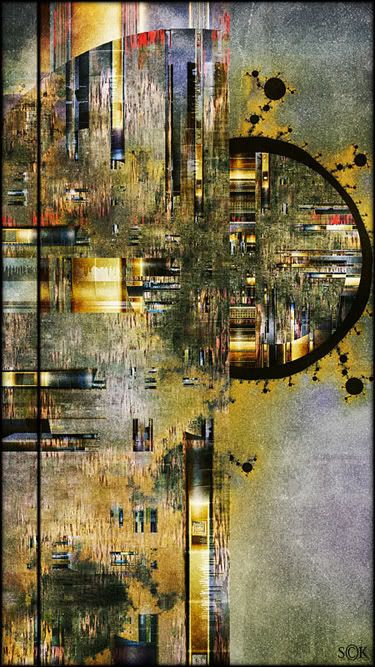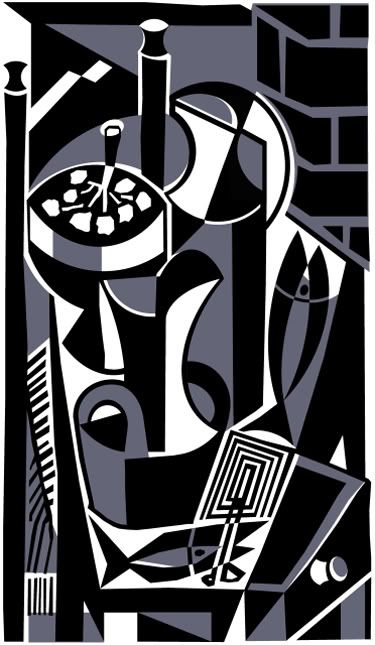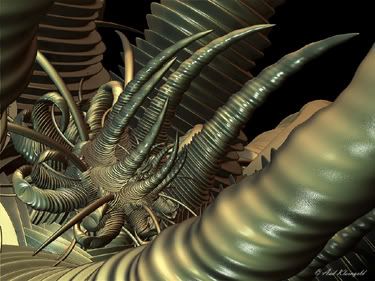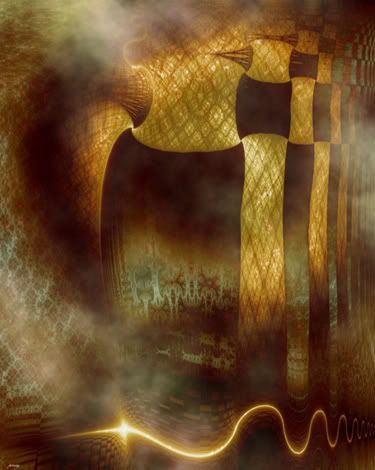R.I.P. -- Benoit Mandelbrot Fractal Art Contest?

And how long would you say have these alleged fractals been missing?
[Image seen on self-delighting soul]
Not only the fractals but everything else is MIA: winners, also rans, losers, judges, intractable sponsors, lists of rules, photos of the directors hanging with Mandelbrot, everything. All gone. Sites for both the BMFAC 2006 and BMFAC 2007 contests have gone dark.
What went down? Anyone in our newly established non-existent community know the scoop?
Here are some off-the-cuff possibilities followed by snappy rejoinders to each:
Possibilities:
a) The sites are temporarily down for maintenance.
b) The sites are being moved to a new location.
c) The known-to-be-insistent sponsors severed funding and insisted the sites be shuttered.
d) The bandwidth expenses for hosting the nearly 50 honorably mentioned images from the 2007 contest became too much to fiscally handle.
e) The BMFAC judges finally became so shamed from participating in such a blatant venture of crass self-promotion that they revolted, hacked the sites, and brought them down.
f) Although the contests had no entry fee, submissions to the Mississippi School of Anti-Fractal Art have fallen off so much that self-publicity from the BMFAC was no longer "profitable" enough for a few of the judges/teachers to use the buzz to fill classes, and thus the contest sites collapsed in upon themselves like a spent black hole.
g) God actually does exist, noticed the gross travesty of BMFAC, and smote their web presence.
h) Pressure and negative criticism from a certain unmentioned blog eventually forced the BMFAC to go gently into that good night.
Rejoinders:
a) Possibly, although the rest of Fractalus (BMFAC's former server) seems to be humming along just fine.
b) Maybe, but wouldn't the previous sites have a message indicating a move is in progress or has been made rather than showing surfers blankness?
c) Doubtful. The BMFAC sponsors were always shadowy straw men. They were vilified as being responsible for the contest rules that let the judges into the show through the back door as a "hedge against insufficient quality," but the 2007 rules (same as the 2006 rules) were announced long before any sponsors were named.
d) Could be. Having 50 rather than the more traditional 5 honorable mentions certainly ups the page hits. But since both the 2006 and 2007 contest sites hosted the images of all entries, this supposition is unlikely.
e) Yeah. Right. (Rolls eyes). When recursive pigs iterate.
f) Well, six courses in "Fractals and Flames" are still listed and apparently going strong, although one of the BMFAC judges is no longer currently listed among "the faculty."
g) Be nice to think so, but I suspect God has bigger fish to fry -- like whipping up plagues of locusts for former Bush Administration war criminals.
h) Chances are slim. According to defenders of the unethical practices of the status quo and a few roving trolls, no one actually reads or (shudder!) would ever take this certain unmentioned blog seriously.
Tags: fractal, fractals, fractal art, fractal blog, benoit mandelbrot fractal art contest, rip bmfac, mississippi school of anti-fractal art, please join my prayer chain to smite trolls, cruelanimal, orbit trap














